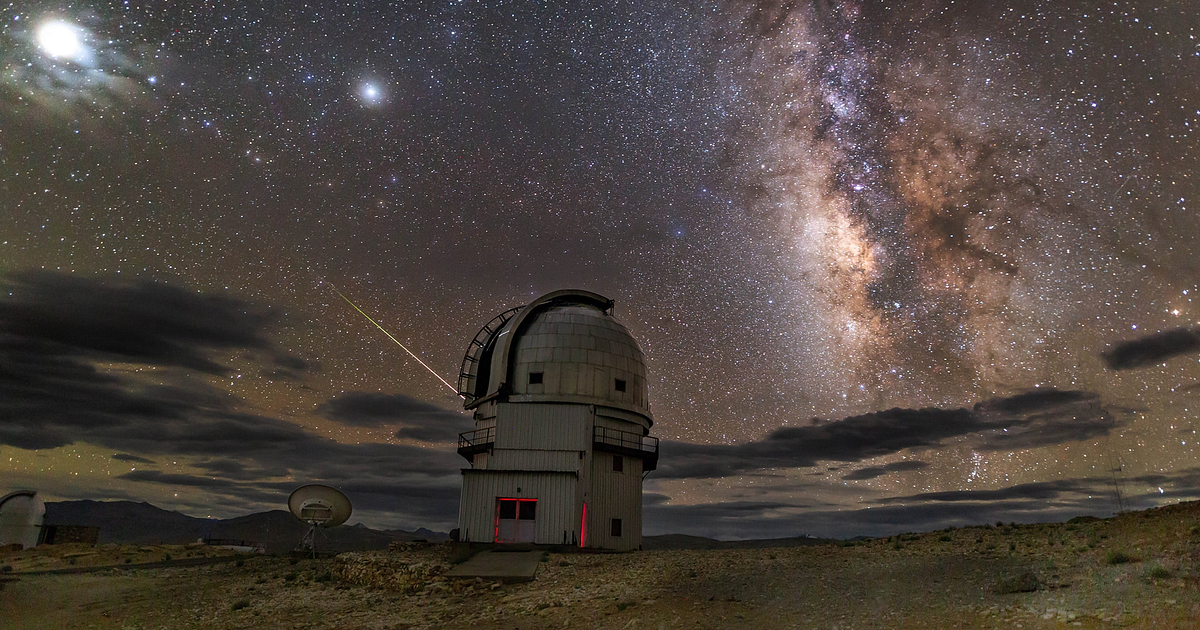Context
- In 2025, the Hanle region of Ladakh gained national attention as India’s first Dark Sky Reserve, a pioneering initiative blending science, sustainability, and local participation.
- The Reserve, located in the Changthang Wildlife Sanctuary, now serves as a global example of how protecting the night sky can also strengthen livelihoods through astro-tourism and education.
What is a Dark Sky Reserve?
- A Dark Sky Reserve is a designated area where artificial light pollution is strictly controlled to preserve natural night skies for scientific, educational, and cultural purposes.
- Globally, such reserves are certified by the International Dark-Sky Association (IDA).
- They enable both professional astronomy and public stargazing while promoting ecological balance and sustainable tourism.
Hanle Dark Sky Reserve: Location and Significance
- The Hanle Dark Sky Reserve lies at an altitude of around 4,250 metres in Ladakh’s Changthang Plateau, one of the world’s most pristine astronomical sites.
- It is managed through a tripartite agreement among the Indian Institute of Astrophysics (IIA), the Union Territory of Ladakh, and the Ladakh Autonomous Hill Development Council (LAHDC), Leh.
- Hanle’s Bortle-1 rated skies, the highest clarity on a 9-point scale, make it ideal for deep-sky observations and astrophotography.
- Its dry climate, low humidity, minimal aerosols, and near-zero light pollution ensure uninterrupted celestial visibility.
Scientific Institutions and Observatory Infrastructure
- Hanle hosts the Indian Astronomical Observatory (IAO), operated by the IIA.
- Major telescopes here include:
- Himalayan Chandra Telescope (HCT): Optical and infrared observations.
- GROWTH-India Telescope: A collaboration with IIT Bombay for time-domain astronomy.
- High Altitude Gamma-Ray Telescope (HAGAR): In partnership with TIFR.
- Major Atmospheric Cherenkov Experiment (MACE): India’s largest gamma-ray telescope, developed with BARC.
- These facilities make Hanle one of Asia’s highest-altitude astronomical hubs and a vital contributor to India’s space science ecosystem.
Astro-Tourism and Community Participation
- To integrate science with sustainable development, IIA has trained 25 local youth (including 18 women) as Astronomy Ambassadors.
- They conduct night-sky tours, telescope demonstrations, and basic astronomy sessions for tourists, earning income while promoting scientific literacy.
- In 2024, the reserve recorded nearly 10,000 visitors, indicating the rapid growth of astro-tourism as a livelihood source for the remote Himalayan community.
Conservation and Light Pollution Control
To preserve Hanle’s dark skies:
- The IIA distributed lamp shades, blackout curtains, and warm-tone LED bulbs to local households.
- Outdoor lighting is regulated, and no white or blue light is permitted during stargazing events.
- Local residents actively participate in maintaining the light-free environment, linking conservation with community ownership.
Annual Star Party: Science Meets Society
- Since 2023, the Reserve has hosted an annual “Star Party” – a public astronomy festival combining lectures, observation sessions, and astrophotography workshops.
- The 2025 edition saw participants from across India, supported by volunteers from the Bangalore Astronomical Society.
- Attendees observed rare phenomena such as zodiacal light, gegenschein (faint glow at the point in the sky opposite the Sun), and the Belt of Venus, visible only from ultra-clear skies like Hanle’s.
- These gatherings also promote hands-on science learning and inspire interest in astronomy among youth.
Challenges and Way Forward
| Challenges | Way Forward |
| Harsh climatic conditions and low oxygen levels limiting long stays | Develop acclimatization facilities and medical support for visitors |
| Limited digital connectivity and logistics in remote areas | Expand digital infrastructure and eco-friendly visitor amenities |
| Balancing tourism with ecological conservation | Implement strict visitor caps and light pollution audits |
| Need for long–term funding for research and outreach | Establish a dedicated Hanle Sky Foundation for research, education, and conservation |
Conclusion
The Hanle Dark Sky Reserve embodies India’s effort to merge scientific advancement, local empowerment, and environmental protection. By preserving the night sky, Hanle safeguards both natural heritage and human curiosity. Its model shows how remote regions can turn astronomy into sustainable development, a future where stars guide both science and livelihoods.
| Ensure IAS Mains Question Q. Discuss the significance of India’s Hanle Dark Sky Reserve in promoting scientific research, environmental conservation, and community-based tourism. (250 words) |
| Ensure IAS Prelims Question Q. With reference to India’s Hanle Dark Sky Reserve, consider the following statements: 1. It is located within the Changthang Wildlife Sanctuary in Ladakh. 2. It is managed jointly by the Indian Space Research Organisation (ISRO) and the Ladakh Administration. 3. It hosts India’s largest gamma-ray telescope. Which of the statements given above are correct? a) 1 and 3 only b) 2 only c) 1 and 2 only d) 1, 2 and 3 Answer: a) 1 and 3 only Explanation: Statement 1 is correct: The Hanle Dark Sky Reserve is situated within the Changthang Wildlife Sanctuary in Ladakh, ensuring protection of both the region’s biodiversity and its pristine night skies. Statement 2 is incorrect: The Reserve is managed by the Indian Institute of Astrophysics (IIA) under an MoU with the Ladakh administration, not by the Indian Space Research Organisation (ISRO). Statement 3 is correct: Hanle hosts the Major Atmospheric Cherenkov Experiment (MACE), India’s largest gamma-ray telescope, designed to study high-energy cosmic phenomena and gamma-ray emissions from celestial sources. |
Also Read | |
| UPSC Foundation Course | UPSC Daily Current Affairs |
| UPSC Monthly Magazine | CSAT Foundation Course |
| Free MCQs for UPSC Prelims | UPSC Test Series |
| Best IAS Coaching in Delhi | Our Booklist |




